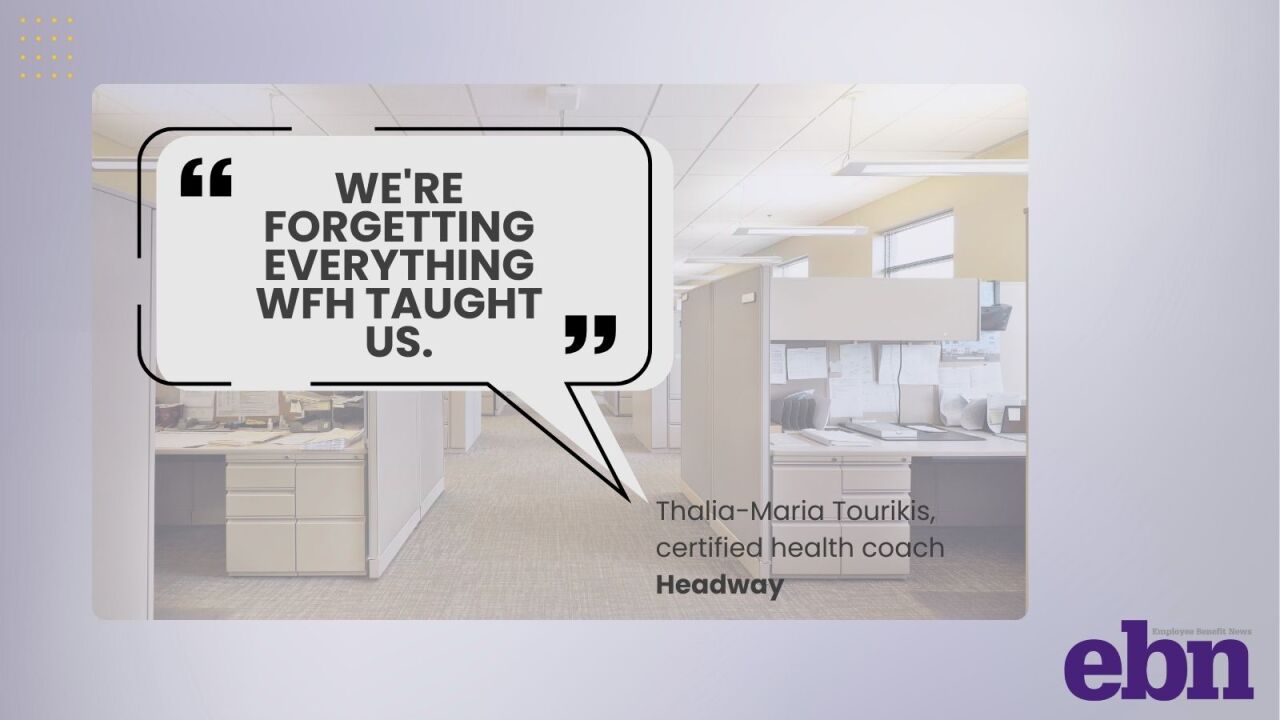Katy Talikowska is new to the role of CEO for The Valuable 500, a business collective committed to
In 2016, at a previous role, Talikowska spearheaded a marketing campaign in partnership with the Rio Paralympics that promised $1.2 million worth of airtime to a brand that authentically represented people with disabilities in their advertisements. Her idea, which featured real women with disabilities in conversation, won the competition, putting her on the path toward changing how disabled individuals are represented at work and in the media.
"We entered it because I was motivated by doing what I thought was the right thing to do," she says. "But as someone who worked in advertising for quite a while, when I saw the statistics [of disabled representation in media], I felt like I'd been part of the problem. So that was my first step."
Read more:
In 2022, only about 21% of people with a disability in the U.S. were employed, according to the Bureau of Labor Statistics, a slight increase from about 19% in 2021. And while 90% of companies in the U.S. claim to prioritize diversity, only 4% are actually
Inspired by her work for the Rio Paralympics and looking to improve representation across all industries, not just in advertising, Talikowska partnered with the former CEO of The Valuable 500 and worked on many smaller campaigns, before being offered the position of CEO herself. But she never forgot that first campaign, which c
"What's right for society is what's right for business," she says. "That campaign started my personal and professional passion for disability inclusion. So to sit here today, only four months into this role, and to now be able to continue that work from the inside in a very privileged leadership position is amazing."
EBN recently chatted with Talikowska, who shared her plans for the future of The Valuable 500 and how she intends to make
What are some of the biggest challenges employers struggle with around disability inclusion?
If a company is trying to do the right thing and is instigating these inclusive policies and strategies, but the spirit of disability inclusion isn't embedded in the DNA of an organization — throughout the entire process across every facet — they're going to fail. These are organizations who start off with the building blocks and the infrastructure, but don't make sure that it infuses the entire culture. Then you've got two problems: Turnover of people with disabilities is much higher than the turnover of non-disabled people, which means you're not getting disabled talent into those leadership positions, and failing to create a career path.
Read more:
At The Valuable 500, we try to help businesses mitigate against that. This year, we've piloted a reverse mentoring program with 77 of our companies called Generation Valuable where we partner a C-suite mentor with a disabled mentee in middle management who clearly has huge potential. What's really beautiful and perhaps unsurprising is that the mentors are getting as much from the program as their mentees because it's important for leadership to hear and feel and understand firsthand experiences, good and bad, of their disabled employees. It's only through those true and authentic conversations that they can learn and they can improve.
What advice do you give businesses looking to make actionable changes within their organization?
Never underestimate the importance and the power of employee resource groups. Now, admittedly, in order to generate and create ERGs, you do need to make sure that you have a workplace where people are comfortable to self-disclose and self-identify as a person with a disability. I would genuinely say step one is to understand the lay of the land and start to report against your disability representation data. At The Valuable 500, we're currently working on a Self ID Resource Guide, which is really important to know so that you've got the data to measure where you are right now. If you don't measure it, you can't manage it. And if you don't measure it, you can't improve it.
Next is to be open about talking about what is the right environment for disabled workers to be happy and to do their best possible work. It's starting to have those conversations and putting those sorts of tools and best practices in place. This doesn't sound like rocket science, but really, it's creating an environment where people can be honest and open and transparent.
What are some major consequences businesses risk when they don't go out of their way to take that first step?
We have to stop that siloed conversation within the boardroom where societal issues are in one category and the nitty gritty data about business and growth is in another. One of our companies shared with us that they found that businesses that prioritize disability inclusion, and get it right, double their net income and achieve 28% higher revenue. It just makes good business sense to have a diverse workforce, because you're getting different, unique, stimulating, disruptive thinking.
On the more personal level, if you're not committed to getting it right, that same fantastic disabled talent will leave and go elsewhere. If you don't feel welcome and if you don't feel you can bring your whole self to work, and you also don't see that there is the ability to progress and grow and develop within an organization, that's going to be a real problem. If you're not talking about disability inclusion at a leadership level, then that hugely affects the needs of the disabled community. To combat stigma in businesses, leaders have to integrate accessible technologies that work and they need to implement inclusion in product design — that's what will propel the disabled talent into the positions of leadership. And I think that's what's going to unlock a better business and a better, happier, more constructive and valued environment for disabled tenants within the workforce.
What are the next steps for The Valuable 500 and how will they inspire more change at business level?
Action, delivery and accountability. Phase one of The Valuable 500 was all about driving awareness of the problem and breaking that CEO silence by getting 500 CEOs to commit to the cause. Now, we have flipped into an all important new phase of accountability — and not in a shaming, or finger wagging kind of way. If you're held to account, then you're measuring and tracking and managing and improving. It's making sure that the companies that have signed up with us didn't do it to pay lip service or to be tokenistic. We now have three clear areas of focus: reporting, leadership and representation. As a synchronized collective, we are trying to solve problems with data and insights and programs to break down those major barriers.






